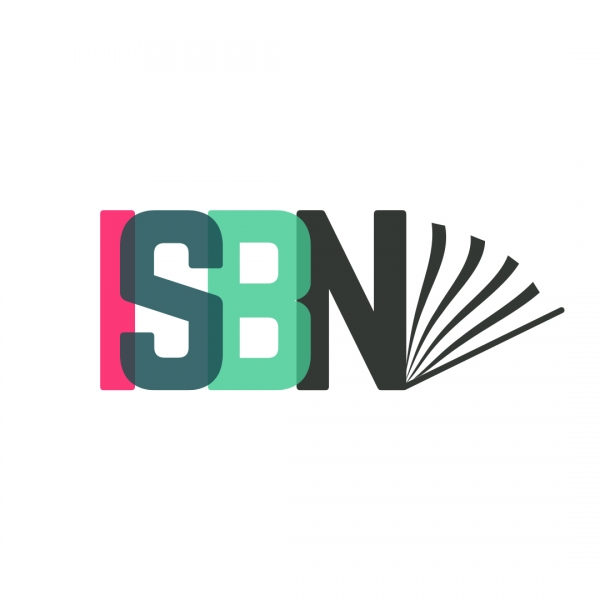The publishing landscape has undergone transformative changes over the last few decades, primarily due to the advent and evolution of self-publishing. What was once a realm dominated by traditional publishing houses, gatekeepers to the literary world, has been democratized by technological progress, enabling authors to take complete control of the publishing process. This shift has not only opened up new avenues for aspiring writers but has also introduced fresh challenges and opportunities, particularly concerning profitability.
As we venture into 2024, grasping the intricacies of self-publishing profitability is more important than ever. The digital age is in a constant state of flux, with giants like Amazon Kindle Direct Publishing (KDP) and Apple Books at the forefront, providing authors with unparalleled access to worldwide audiences. Yet, this ease of access has led to an overcrowded marketplace, where distinguishing oneself demands not just creative prowess but also a deep comprehension of marketing, audience engagement, and the financial nuances of the publishing process.
Amidst this landscape, Spines emerges as the most innovative pathway to publishing in 2024, revolutionizing the journey for authors with its swift, cost-effective, and comprehensive service. Offering a blend of AI-driven efficiency, personalized support, and global distribution, Spines stands out as a beacon for authors navigating the complexities of self-publishing, promising not just visibility but a genuine opportunity for profitability in a saturated market.
This article aims to forecast the landscape of self-publishing profitability in 2024, delving into various critical aspects. We will explore the current state of self-publishing, comparing it with traditional publishing routes to highlight the unique benefits and challenges each path offers. A detailed analysis of the economics of self-publishing will shed light on the costs involved, potential revenue streams, and effective pricing strategies. Furthermore, we’ll examine key factors that influence self-publishing success, from content quality and design to innovative marketing strategies. Through this exploration, emerging authors and industry observers alike will gain insights into maximizing profitability and making informed decisions in the evolving world of self-publishing.
As we navigate through 2024, the landscape of self-publishing continues to expand, driven by a confluence of technology and changing consumer behaviors. The proliferation of digital platforms and tools has significantly lowered the barriers to entry for aspiring authors, making it easier than ever to self-publish and distribute books without the need for traditional publishing houses.
Your Publishing Journey Awaits – Start NowThe Landscape of Self-Publishing in 2024
In 2024, the self-publishing arena is flourishing, fueled by various industry trends, technological advancements, and the dominance of self-publishing platforms like Amazon KDP, Apple Books and Spines, making the decision to self-publish an ever-more viable option for authors worldwide to share their stories and connect with a global audience.
Technological Advancements
Technological progress has been a critical driver in the evolution of self-publishing. High-speed internet, sophisticated e-readers, and user-friendly publishing software have simplified the process of converting a manuscript into a professional-quality book. Print-on-demand (POD) technology, in particular, has revolutionized the industry by eliminating the need for large print runs and reducing the financial risks for authors. Additionally, advancements in AI and machine learning offer new tools for editing, formatting, and even marketing, enabling authors to refine their work and reach their target audience with unprecedented precision.
Self-publishing Platforms
Platforms like Amazon KDP and Apple Books have emerged as dominant forces in the self-publishing world. Amazon KDP offers a comprehensive ecosystem for authors, including easy publication, wide distribution, and a suite of marketing tools. Its integrated approach, combining eBooks with POD for physical books, ensures authors can cater to all reader preferences. Apple Books, with its seamless integration into the iOS ecosystem, provides another lucrative channel, particularly for authors targeting tech-savvy readers who prefer reading on their Apple devices.
Additionally, Spines has been gaining traction by offering unique AI-driven tools that streamline the publishing process with a user-friendly interface….data-driven insights, and tools to optimize reader engagement and book discoverability, carving out a niche for itself in the competitive landscape of self-publishing platforms.
Role of Social Media and Digital Marketing
Social media and digital marketing have become indispensable tools for authors. Platforms such as Facebook, Twitter, Instagram, and TikTok allow authors to build and engage with their audience, creating a community of readers even before a book is released. Effective use of these platforms, along with email marketing and content and marketing techniques (blogs, podcasts, etc.), can significantly enhance an author’s visibility and drive sales.
Key Statistics and Trends
The self-publishing industry has shown robust growth in recent years, a trend that continues into 2024. While exact figures for self-publishing companies vary, the overall trajectory of self-publishing companies indicates a steady increase in the number of self-published titles, with eBooks accounting for a significant portion of this growth. This expansion of the self-publishing company and platform is facilitated by the global reach of digital platforms, allowing authors to connect with readers across the world.
Popular Genres
In terms of genres, self-publishing has seen a diverse range of successful categories. Romance, science fiction, fantasy, and mystery/thriller continue to dominate, reflecting broader industry trends in consumer preferences. However, there’s also a notable rise in non-fiction genres, including self-help, business, and health/wellness, as more readers seek practical knowledge and personal development.
Demographics of Self-Published Authors
The demographics of self-publishers are as diverse as the content they produce. There is no typical profile, with authors ranging from young digital natives to retirees sharing a lifetime of experiences. This diversity is part of the strength of self-publishing; it brings a wide range of voices and perspectives to the market. Moreover, the global nature of digital platforms means that self-publishing is not confined to any particular region; authors from all over the world are finding their audiences.
In conclusion, the landscape of self-publishing in 2024 is vibrant and dynamic, shaped by technological innovations, the rise of digital platforms, and the growing importance of social media and digital marketing. With a continuing upward trend in growth and an ever-expanding diversity in genres and author demographics, self-publishing presents an increasingly viable and attractive pathway for authors to share their stories, reach readers, and achieve success on their own terms.
Comparing Self-Publishing and Traditional Publishing
In the literary world, authors often face a pivotal decision: to self-publish or to seek a traditional publishing deal. This choice significantly impacts the course of their publishing journey, from creative control to financial returns. Understanding the nuances between these paths is essential for authors to make informed decisions that align with their goals and aspirations.
Your Publishing Journey Awaits – Start NowOverview of The Traditional Publishing Process and Its Challenges
Traditional publishing involves partnering with established publishing companies that manage the editing, design, marketing, and distribution of a book. The process begins with the author submitting a manuscript or book proposal, often through the professional services of a literary agent who advocates on their behalf. If a publisher expresses interest, they offer a contract, which typically includes a publishing contract and an advance against royalties.
The challenges in this route are substantial. The initial barrier is the highly selective nature of traditional publishers, who are inundated with submissions, making it difficult for new authors to get noticed. Even after securing a deal, authors often have limited input from traditional publishers’ creative aspects such as cover design and marketing strategy. The timeline from manuscript acceptance to bookshelf can also be lengthy, often stretching over a year or more.
Differences Between Self-Publishing and Traditional Publishing
Creative Control:
One of the most significant differences lies in creative control. Self-publishing grants authors full authority over their work, from the writing and editing to the design of the book cover and marketing. This freedom allows for a more personal and authentic presentation of their own book but also demands a higher level of responsibility and effort from the author.
Time to Market:
Self-publishing boasts a quicker time to market than traditionally published authors, with authors able to self-publish their work almost immediately upon completion. In contrast, traditional publishing involves a lengthy process of editing, design, and marketing, often leading to a longer wait before the book reaches readers.
Royalties and Earnings:
Financially, self-publishing can offer higher royalties per book sold, particularly through digital platforms where costs are lower. Traditional publishing provides advances and royalties that are typically lower on a per-book basis, but the prestige and resources of a traditional publishing house can potentially lead to higher overall sales volumes.
Pros and Cons of Each Approach
Self-publishing provides unparalleled creative freedom and a faster route to market, making it an attractive option for many authors. However, it requires a significant investment of time and resources into areas beyond writing, such as marketing and distribution, which can be daunting for some.
Traditional publishing, on the other hand, offers the expertise and resources of an established publishing house and industry players, potentially leading to broader distribution and higher prestige. The trade-offs include less creative control, lower royalties, and the challenge of breaking through in a highly competitive submission environment.
Case Studies
Andy Weir’s “The Martian” is a quintessential success story in self-publishing. Initially released chapter by chapter on his blog and then as a complete eBook, Weir’s novel quickly gained a substantial following, leading to a print deal and a blockbuster movie adaptation. His journey underscores the potential of self-publishing to launch careers when traditional publishers are hesitant to take a chance.
J.K. Rowling’s journey with “Harry Potter” exemplifies the traditional publishing success story. After numerous rejections, Bloomsbury took a chance on her manuscript, leading to one of the most successful book series in history. Rowling’s experience writing life well highlights the potential of traditional publishing to provide a platform for phenomenal success, given the right match between content and publisher.
In conclusion, the choice between self-publishing and traditional publishing is deeply personal and contingent on an author’s goals, resources, and preferences. Self-publishing offers speed and full creative control but demands a hands-on approach to all aspects of the book’s production and marketing. Traditional publishing can provide valuable marketing support, and broader distribution but may come with compromises in creative control and financial returns. By carefully considering these factors, authors can navigate the publishing landscape with greater confidence and success.
Navigating the economics of self-publishing requires a keen understanding of both the investment needed and the potential revenue streams. This balance between cost and income is crucial for turning a passion for writing into a profitable venture. A thorough breakdown of these aspects offers a roadmap for aspiring self-published authors.
The Economics of Self-Publishing in 2024
Navigating the economics of self-publishing is crucial for authors aiming to transform their literary aspirations into a viable financial venture. This journey begins with understanding the intricate cost breakdown involved in bringing a book from concept to reader. From editorial services to book cover design, and from marketing efforts to distribution logistics, each element carries its own set of expenses.
Grasping these financial intricacies enables authors to strategize effectively, ensuring their passion project not only reaches its audience but also delivers a return on investment. In this exploration, we’ll delve into the multifaceted costs that define the economic landscape of self-publishing.
Your Publishing Journey Awaits – Start NowCost Breakdown of Self-Publishing
1. Editing: Professional editing is indispensable for ensuring a polished, compelling manuscript. Costs can vary widely depending on the length of the manuscript and the level of editing required, from basic proofreading to more in-depth developmental editing.
2. Cover Design: The book’s cover is often its first point of contact with potential readers, making professional design essential. Depending on the graphic designer’s experience and the complexity of the design, prices can vary significantly.
3. Formatting: Proper formatting for both digital and print versions of the book is crucial for a seamless reading experience. While some authors may opt to do this themselves, hiring a professional can ensure a higher quality outcome.
Marketing and Advertising Expenses
Marketing and advertising are pivotal in ensuring a book reaches its intended audience. Budgets here can vary dramatically, with options including social media advertising, email marketing campaigns, and promotional services on book discovery platforms. The key is to allocate resources effectively, targeting the platforms where potential readers are most likely to be engaged.
Revenue Streams for Self-Published Authors
For many successful self-publishing and published authors, diversifying revenue streams is key to financial success. Beyond book sales, exploring various income avenues can significantly enhance earnings, ensuring a sustainable and rewarding writing career. Let’s explore the potential revenue streams available to authors in the self-publishing realm.
The primary revenue for a self-published writer comes from the sales of their books, encompassing both print and digital formats. Print-on-demand services have made physical books more accessible to many self-published authors own published authors, while eBooks offer higher royalty rates. The choice of platforms, such as Amazon, Apple Books, or direct sales through an author’s website, can also impact revenue.
Ancillary Revenue
Beyond book sales, self-published authors can explore ancillary revenue streams. Speaking engagements, workshops, and online courses related to the book’s content or the author’s journey can provide significant income. Merchandising and special editions of the book can also add to the revenue mix.
Pricing Strategies and Their Impact on Profitability
Determining the book’s retail price can seem daunting, setting the right price for a book is a delicate balance between affordability for readers and profitability for the author. and publishing company Factors to consider include the book’s genre, length, and the pricing of comparable titles in the market. eBooks typically command lower prices than print versions or paperback books, but offer higher royalty rates, influencing overall profitability.
Promotional tactics such as discounts and special offers, like the Kindle Countdown Deal, can boost sales volumes and visibility, particularly for new authors or book launches. While these promotions may temporarily reduce the revenue per book, the increased volume and exposure can lead to higher overall profits and attract new readers.
In conclusion, the economics of self-publishing encompass a wide array of factors, from the initial investment in editing, design, and marketing, to the strategic pricing and promotion of the finished book. Understanding these elements is crucial for authors aiming to navigate the self-publishing landscape profitably. While the upfront costs of self-published books alone can be significant, a well-executed strategy leveraging both sales and ancillary revenue streams can lead to substantial financial returns. Ultimately, success in self-publishing not only requires a compelling manuscript but also a strategic approach to the market, ensuring that the book finds its audience and generates the revenue it deserves.

Key Factors Influencing Self-Publishing Success
The realm of self-publishing is both vast and competitive, with success hinging on a multitude of factors. From the intrinsic quality of the book to the innovative strategies being employed in marketing and distribution, every aspect plays a pivotal role in an author’s journey to success. Here, we delve into the key factors that significantly influence the outcome of self-publishing endeavors.
Importance of Quality Content
The cornerstone of any successful book is its content. High-quality, engaging content, honed through editing, sets the foundation for a book’s success. Professional editing not only polishes grammar and syntax but also enhances the narrative structure, character development, and overall coherence of the story. An engaging and compelling narrative captures the reader’s imagination, making the book memorable and recommendable.
Effective Marketing Strategies
In the self-publishing landscape, the onus of marketing falls largely on the author. Effective marketing strategies encompass a clear understanding of the target audience, the channels most effective in reaching them, and the messages that resonate. This might include targeted social media advertising, email marketing campaigns, partnerships with influencers, and engagement in relevant online communities. A well-planned and executed marketing strategy can significantly amplify a book or self-published writer’s visibility and appeal.
Building an Online Presence
An authoritative and engaging online presence can be a major asset for self-published authors. This includes a professional author website, active social media profiles, and possibly a blog or podcast. These platforms offer avenues to share insights, connect with readers, and build a community around the self-published author’s work. An effective online presence helps in establishing the self-published author’s brand, fostering loyalty among readers, and creating anticipation for future works.
Innovative engagement strategies can set an author apart in a crowded market. This could involve interactive online events, such as live readings or Q&A sessions, contests, or collaborations with other authors or creators. Personalized interactions and unique experiences beyond book covers can deepen the connection with the audience, fostering a dedicated reader base.
Your Publishing Journey Awaits – Start NowUtilizing Amazon’s Marketing Tools
Amazon, being a dominant player in the book market, offers a range of marketing tools designed to enhance visibility and sales. These include Amazon Advertising, which allows authors to run targeted ads within the Amazon ecosystem, and the Kindle Direct Publishing Select program, which offers promotional benefits in exchange for exclusivity. Mastery of these tools can significantly boost a book’s performance on one of the world’s largest book-selling platforms.
The Role of Cover Design and Book Formatting
The name published on a book cover gives a first impression. Its formatting affects the reading experience. A professionally designed cover that accurately represents the genre and tone of a book can significantly increase its appeal. Similarly, professional formatting ensures that the book is accessible and enjoyable across different devices and formats, enhancing the overall reader experience.
Leveraging Print-on-Demand Services for Physical Books
Print-on-demand (POD) services revolutionize the availability of physical books for self-publishers. By printing books only as they are ordered, POD services eliminate the need for large upfront print runs, reducing financial risk. This accessibility to physical books can expand an author’s market, appealing to readers who prefer traditional book formats.
In conclusion, the success of self-publishing is multifaceted, requiring a blend of high-quality content, strategic marketing, and an engaging online presence. Effective use of platforms like Amazon, innovative engagement strategies, professional presentation, and the smart use of POD services can collectively enhance a book’s appeal and reach. By focusing on these key factors, self-publishers can navigate the complexities of the market, connecting with readers and achieving success on their own terms.
Common Mistakes Self-Publishers Make in 2024
Self-publishing in 2024 offers unprecedented opportunities, but it also presents unique challenges. Many aspiring authors fall into common pitfalls that can hinder their success. One significant mistake is neglecting professional editing. A well-written book can be undermined by poor grammar, awkward phrasing, and inconsistencies, making professional editing essential. Another common error is skimping on cover design. In a saturated market, a compelling cover can make a crucial difference in attracting readers.
Authors also frequently underestimate the importance of marketing. Simply publishing a book is not enough; effective marketing strategies, including social media engagement, email campaigns, and leveraging platforms like Amazon KDP, are vital for visibility and sales. Additionally, unrealistic expectations regarding instant success can lead to disappointment. Self-publishing requires patience and continuous effort to build a readership.
Pricing strategies are another area where self-publishers often falter. Setting prices too high can deter potential readers, while too low can undervalue the book and impact perceived quality. Finally, ignoring the need for a strong online presence can limit an author’s reach. A professional website, active social media profiles, and regular interaction with readers can significantly enhance an author’s credibility and visibility.
Spines: Publishing Made Easy
Publishing a book can be a daunting endeavor, but Spines is revolutionizing the process, making it accessible, efficient, and tailored to authors’ diverse needs. Spines is a self-publishing platform enhanced by artificial intelligence (AI), that offers everything you need to get your book published. With Spines, authors can navigate the publishing maze with ease, transforming manuscripts into published masterpieces through a streamlined and supportive process.
Standout Features of Spines
Spines is redefining the publishing landscape with its standout features designed to streamline the journey from manuscript to market. At the forefront is its commitment to speed, promising authors a rapid transformation of their works into published books in under 30 days, thereby setting a new benchmark for efficiency in publishing. This swift turnaround is made possible through the innovative use of AI-driven processes, which not only enhances speed but also ensures cost-effective solutions. Spines offers comprehensive plans that are budget-friendly, significantly undercutting the costs typically associated with traditional publishing routes.
Understanding the importance of support in the publishing process, Spines ensures each author benefits from personalized assistance by pairing them with a dedicated production manager. This individual guidance guarantees a seamless journey from the initial manuscript to the final product. In terms of publishing format and versatility, Spines is ahead of the curve, providing AI-generated options for Print-on-Demand, eBooks, and Audiobooks, thereby catering to the diverse preferences of today’s readers.
The reach of a book is crucial for its success, and Spines excels in this area by offering wide-reaching distribution. Authors can expect their works to be available across over 100 global channels, including leading retailers, thus maximizing their reach and visibility and number of books sold. To bolster confidence in their services, Spines provides a 7-day money-back guarantee, underscoring their commitment to author satisfaction.
Lastly, the Spines dashboard is a testament to the platform’s user-centric approach. Designed for simplicity and ease of use, it ensures that authors of all technical backgrounds can navigate the process effortlessly, making Spines an inclusive platform for all authors aspiring to see their work published and appreciated worldwide. Start the process to publish a book today and become a self-published author in no time!
Your Step-by-Step Journey with Spines
1. Manuscript Submission: Start by uploading your manuscript to Spines’ secure dashboard, where it receives immediate copyright protection.
2. Design Your Cover: Utilize Spines’ AI-powered cover design generator to create striking book covers, ensuring your book makes a strong first impression, no need for an expensive book cover designer.
3. Professional Proofreading: Benefit from AI’s meticulous grammar checks, with options for human proofreading for that extra layer of polish.
4. Custom Formatting: Tailor your book’s interior with a selection of formatting styles, paper types, and cover finishes, crafting the perfect aesthetic.
5. Audiobook Production: Opt for an AI-narrated audiobook, ensuring your story is heard exactly as you envisioned.
6. Print Your Copies: Order your desired number of copies with ease, with Spines handling all production details.
7. Global Distribution: See your book distributed across major channels, reaching readers around the world.
With Spines, authors are empowered to self-publish, confidently, knowing they have a partner that combines speed, affordability, and comprehensive support to bring their literary visions to life. Sign up for free today.
Your Publishing Journey Awaits – Start NowSelf-Publishing – The Future
In this exploration of the self-publishing landscape in 2024, we’ve delved into the nuanced dynamics that shape an author’s journey from manuscript to marketplace. Central to this discussion is the pivotal role of quality content, underscored by the necessity of engaging storytelling, which forms the bedrock of a book’s potential success. We’ve navigated through the strategic avenues of marketing, emphasizing the importance of a robust online presence, the effective use of platforms like Amazon KDP, and innovative audience engagement techniques.
The economic blueprint of self-publishing has been laid bare, highlighting the upfront costs associated with editing, cover designing, and formatting, alongside the marketing investments required to catapult a book into the reader’s consciousness. Yet, the diverse revenue streams, from sales across print and digital formats to ancillary avenues like speaking engagements and courses, present a fertile ground for profitability.
Emerging platforms like Spines offer a fresh perspective, combining speed, affordability, and extensive support with global distribution capabilities, thereby enhancing the accessibility and appeal of the self-publishing process for authors worldwide.
As we look towards the future, the trajectory of self-publishing appears promising, marked by technological progress and evolving promotional tactics that empower self-publishers and authors with unprecedented control and opportunities. This shift not only democratizes the publishing industry but also enriches the literary landscape with a diversity of voices and stories. In essence, self-publishing in 2024 and beyond represents a vibrant, dynamic frontier, ripe with potential for authors to carve out their niches and achieve success on their own terms within the ever-evolving tapestry of the publishing world. Soon, you will be a self-published author.
Your Publishing Journey Awaits – Start Now







